Some of the most valuable antiques in the world are made of Chinese porcelain. This esteem and artistic tradition is centuries old, with the first imports coming to Europe in the 17th century as highly sought after items for royalty and aristocracy. Today, we still recognise this late Ming period as being an important era for ceramics. It would not be for another hundred years that European manufacturers could compete with this predominant Asian influence.
 Above: porcelain vases, bottles and figurines from the Qing dynasty
Above: porcelain vases, bottles and figurines from the Qing dynasty
What makes Chinese porcelain valuable? And how can these fragile antiques avoid devastating damage? This article will look into the history of Chinese porcelain, including the distinguishing features that can assist in establishing their age and style. We will also offer professional care advice from our ceramics conservator and information on the sensitive restoration of broken vases, bowls, cups and figurines.
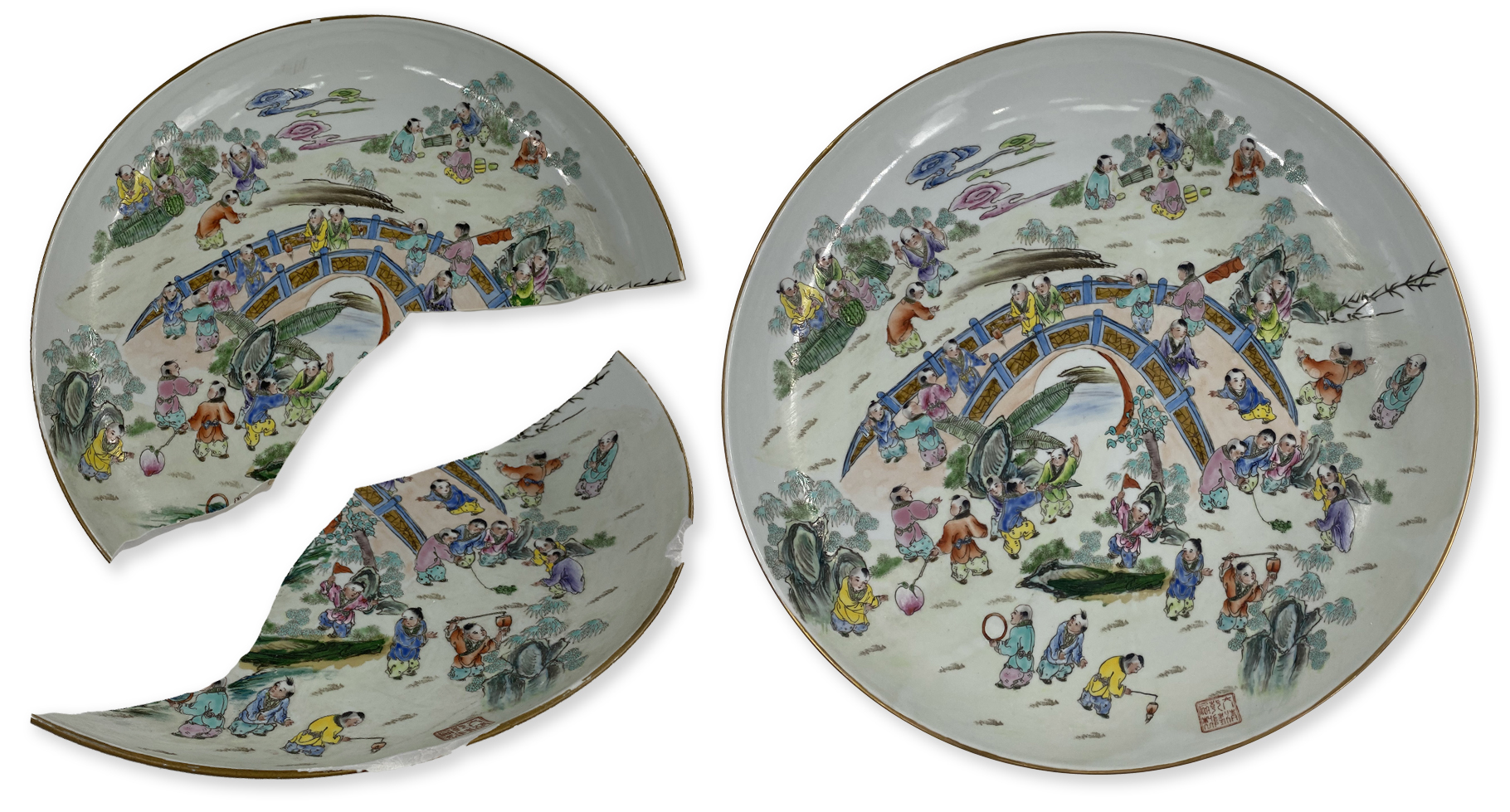
To understand Chinese porcelain, it is first first helpful to understand the most influential dynasties, these include:
- Tang dynasty (618-906)
- 5 dynasties (907-960)
- Liao dynasty (907-1125 )
- Song dynasty (960-1279)
- Qin dynasty (1115-1260)
- Yuan dynasty (1280-1368)
- Ming dynasty (1368-1644)
- Qing dynasty (1644-1916)
 Above: a selection of Chinese vases and jars from the 17th, 18th and 20th centuries
Above: a selection of Chinese vases and jars from the 17th, 18th and 20th centuries
What is porcelain made of?
Porcelain is primarily made of kaolin, feldspar, porcelain stones and quartz. These key ingredients along with kilns that fire at extremely high temperatures allowed Chinese craftsmen to create ceramic items that were both durable and decorative.
 Above: three Ming dynasty drinking vessels, also known as kendi
Above: three Ming dynasty drinking vessels, also known as kendi
Chinese porcelain history
The first porcelain was developed over two thousand years ago. The exact period is uncertain, but there are claims that it was first produced anywhere between the eastern Han dynasty (100-200 AD) to the Tang dynasty (618-906). The arcanum of porcelain was a secret for centuries, it was not until the mid 18th century that European alchemists developed their own process. For the story of European porcelain and Meissen, please click here.
 Above: a Tang dynasty jar, a northern Song dynasty vase, a southern Song dynasty vase with dragonfish handles and a Yuan dynasty vase with vegetal scrolls
Above: a Tang dynasty jar, a northern Song dynasty vase, a southern Song dynasty vase with dragonfish handles and a Yuan dynasty vase with vegetal scrolls
Early porcelain of the Liao dynasty (907-1125) or Song dynasty (960-1279) is typically simple in form and small, with little to no decoration and is sometimes referred to as Ding ware. This was in keeping with Confucian philosophy, which prized simplicity above the ornamental. Celadon, often referred to as green ware, was also developed in this period. The colour often resembles jade, but can sometimes be as dark as an olive green.
 Above: a selection of celadon green ware from the 12th to 15th centuries
Above: a selection of celadon green ware from the 12th to 15th centuries
The Yuan dynasty (1271-1368) was influenced by Mongol rule, bringing an islamic tradition of blue and white decoration to porcelain goods. The popularity of cobalt blue underglaze painting continued into the Ming dynasty (1368-1644) but it was in the 15th century that there was a remarkable change in the purity of material and artistic skill.
 Above: a detail from a Yuan dynasty plate using cobalt blue decoration
Above: a detail from a Yuan dynasty plate using cobalt blue decoration
To many collectors, the highest form of Ming porcelain is from the reigns of Yongle (1403-1425) and Xuande (1426-1435) due to their elegance and robust quality. The decoration appears to have been carefully planned and the pattern is perfectly sized and executed to the shape of the vase, cup or bowl. Lines along the rim or base are also uniform in their application. Typical designs from the period include chrysanthemums, birds, lotus, dragons, or allegorical flowers for the 12 months of the year. There appear to be standard patterns that may have been taken out of reproduced books for craftsmen to work from.
 Above: a selection of Ming dynasty porcelain
Above: a selection of Ming dynasty porcelain
By the 16th century, the quality declined and the artistic skill became less planned and less natural in terms of pattern than the previous era. However, the variety of items and styles becomes more diverse and thus has significance in terms of cultural history. As porcelain became more commercial, the decoration was split into sections to be completed easily by untrained workers – allowing vast amounts of goods with basic floral or daoist patterns to be reproduced.
 Above: a detail from a Qing dynasty plate from the Kangxi period
Above: a detail from a Qing dynasty plate from the Kangxi period
It was in this era that the first imported goods started to arrive in Europe. When the Dutch captured two Portuguese ships full of Chinese goods in 1602 and 1604, they auctioned off over 150,000 pieces of porcelain, quickly causing a craze for what was seen as a rare and luxurious product. This also introduced the term Kraak ware when referring to mass produced blue and white porcelain imports of the period. Large collections of Chinese porcelain were now held by Elizabeth I and later James I, as well as Henry IV of France.
 Above: a selection of Chinese porcelain that was produced for the Dutch market, all early 18th century
Above: a selection of Chinese porcelain that was produced for the Dutch market, all early 18th century
Dynasty reign marks
Many pieces of Chinese porcelain may feature a maker’s mark that denotes the dynasty and reign of their production. This can sometimes be a helpful tool in discovering more about your ceramics, but beware that as many as 80% of these markings are simply used to show respect for earlier craftsmanship and may not always be indicative of a precise date. Two of the most copied marks are from the Xuande period (1426-1435) and Chenghua period (1465-1487).
Below are reign markings from the Ming dynasty:


This use of copying historic reign markings does not mean your porcelain is worthless, as the reproduction of dynasty marks can be found on many antique pieces including those with high value. Reign marks from the 19th century onwards are typically red, whilst earlier pieces are usually blue. If you are uncertain, we recommend speaking to an expert for further advice.
Below are reign markings from the Qing dynasty:


Identifying Ming porcelain
There are several ways to distinguish whether a piece of porcelain is from the sought after Ming dynasty rather than the later Qing period. The following aspects can help you to identify Ming porcelain:
- Knife marks on the foot rim
- Thick glaze with a slightly blue tone and bubbles, very smooth to touch
- Red oxidisation in unglazed areas due to the iron-rich kaolin used in the Ming era
 Above: a selection of Ming dynasty porcelain
Above: a selection of Ming dynasty porcelain
Caring for Chinese porcelain
Valuable porcelain should be kept behind glass, this will avoid any disturbances from dust or atmospheric particles and help to prevent accidental knocks and falls. Whether or not an item is in a protective casing, it should always have a felt, leather or soft fabric mat placed beneath it to absorb any shaking from footsteps or vibrations. If you require display fittings for items such as plates or tableware, always opt for a non-metallic material such as plastic, as this will avoid any scratches or transference of tarnish.
 Above: a detail of an early to mid 18th century Chinese plate that served as inspiration for craftsmen at the Bow porcelain factory
Above: a detail of an early to mid 18th century Chinese plate that served as inspiration for craftsmen at the Bow porcelain factory
Avoid direct sunlight or humid conditions, we recommend an atmosphere with a steady temperature of around 20 degrees and a relative humidity of around 50%. UV rays may in some cases, when painted details are over-glaze, chemical reactions or fading may occur. If you have very sensitive pieces, consider placing UV protective filters on windows or glass casings.
If you would like to use an antique vase for display with fresh flowers, consider using a separate container for water within the body of the object, to ensure no liquid or plant touches the interior.

Chinese porcelain should be handled as little as possible, but when required this should be performed with clean hands and by carefully holding the item by a strong part of the body – not by handles or potentially weak extremities. Any loose pieces, such as teapot lids, should be removed and moved individually to avoid accidents. Do not use anything to stick lids or extra pieces together, instead ensure everything is wrapped separately for storage or transport. Above and below you can see an example of restoration following an accidental breakage.

Cleaning should only be undertaken when entirely necessary, if an item is stained or heavily soiled by dirt or debris, it may be a task for a conservator to prevent any damage from occurring. Light dusting can be performed with a lint-free cloth, but any abrasive sponges or harsh chemicals should be avoided. If a porcelain piece has over-glaze painting or gilding, take care not to rub these areas, as they have no protective layer.
 Above: teapots from the Qing Dynasty, Kangxi period
Above: teapots from the Qing Dynasty, Kangxi period
Saving broken porcelain
When Chinese porcelain is broken, always take care to collect all of the pieces – no matter how small. This is because our professional ceramics conservator will always strive to use all of the original pieces when it comes to restoration.
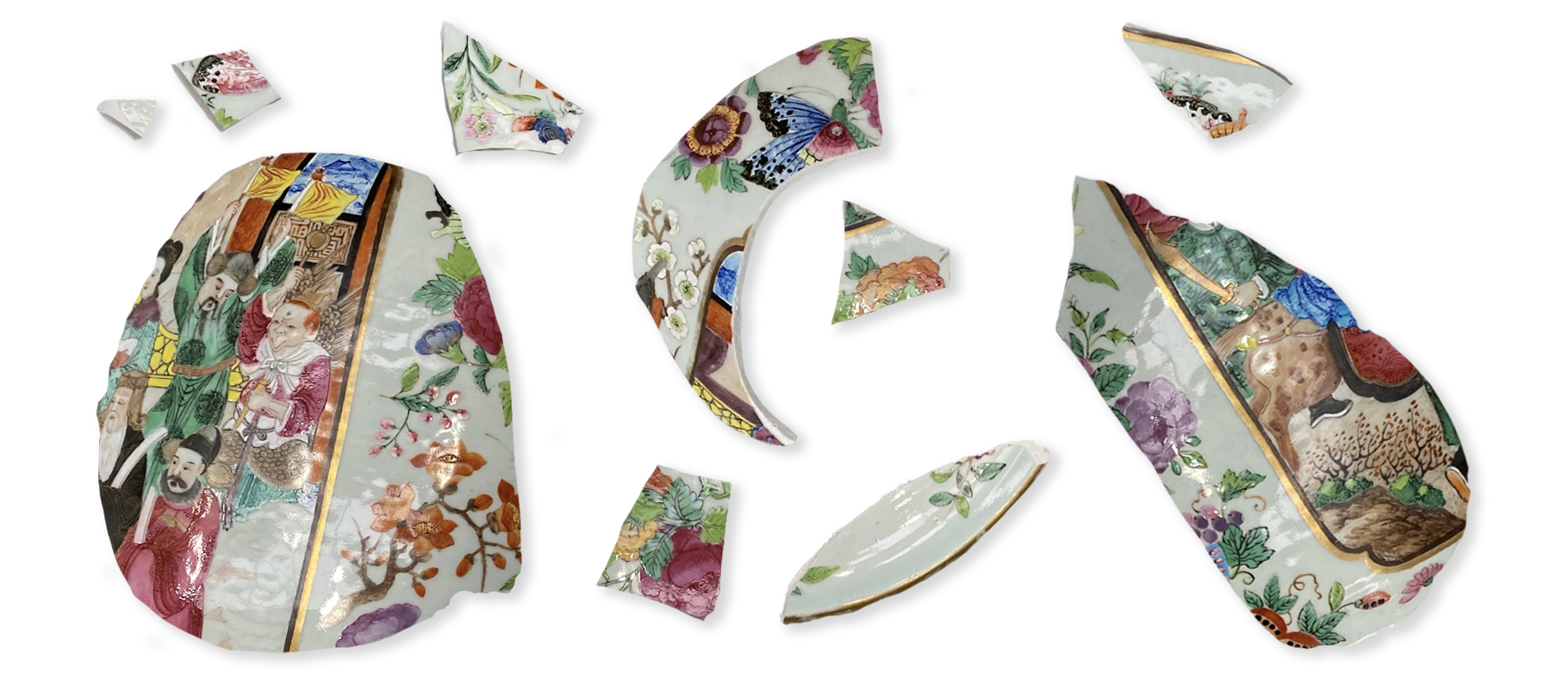
Do not attempt to use glue or tape to repair broken areas, as the acidic properties from these will yellow and discolour the areas over time. Adhesive substances may also disturb any paintwork or detailing when removed. The best plan of action is to wrap all pieces individually in acid-free tissue paper in preparation for professional restoration.
 Above: a detail of a Yuan dynasty plate, 14th century
Above: a detail of a Yuan dynasty plate, 14th century
Chinese porcelain restoration
Our professional ceramics conservator is able to restore porcelain with invisible results. This includes the reconstruction of broken pieces with seamless joins and even the recreation of missing parts where required.
If the item has a breakage or missing area, ceramic restoration has several stages. Firstly the item is gently surface-cleaned and weak points are assessed. Any broken edges are prepared for the re-adhesion of original parts or replica pieces. These are applied using conservation-approved solutions that will not yellow or damage the item over time, as a traditional glue would. Below is an example of a plate with a large area of white that was restored in our studio with a near seamless result.
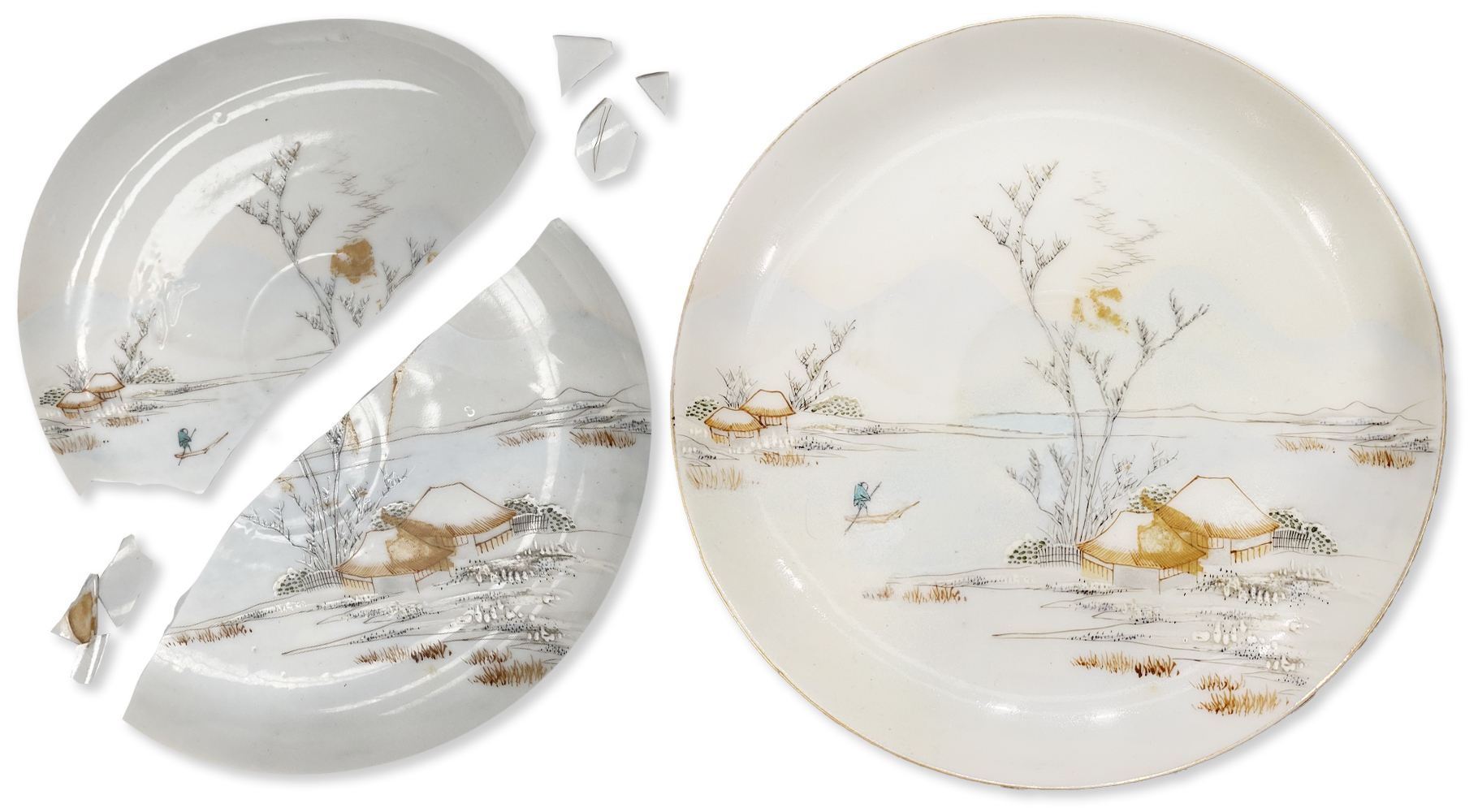
If there are any areas of lost glazing or pigment, our conservator can carefully colour-match and recreate the original appearance. All of these aspects take place over many days as the areas are professionally prepared and allowed to dry. The result is often amazing to our clients, as the original breakage is hard to find due to the perfect finish.
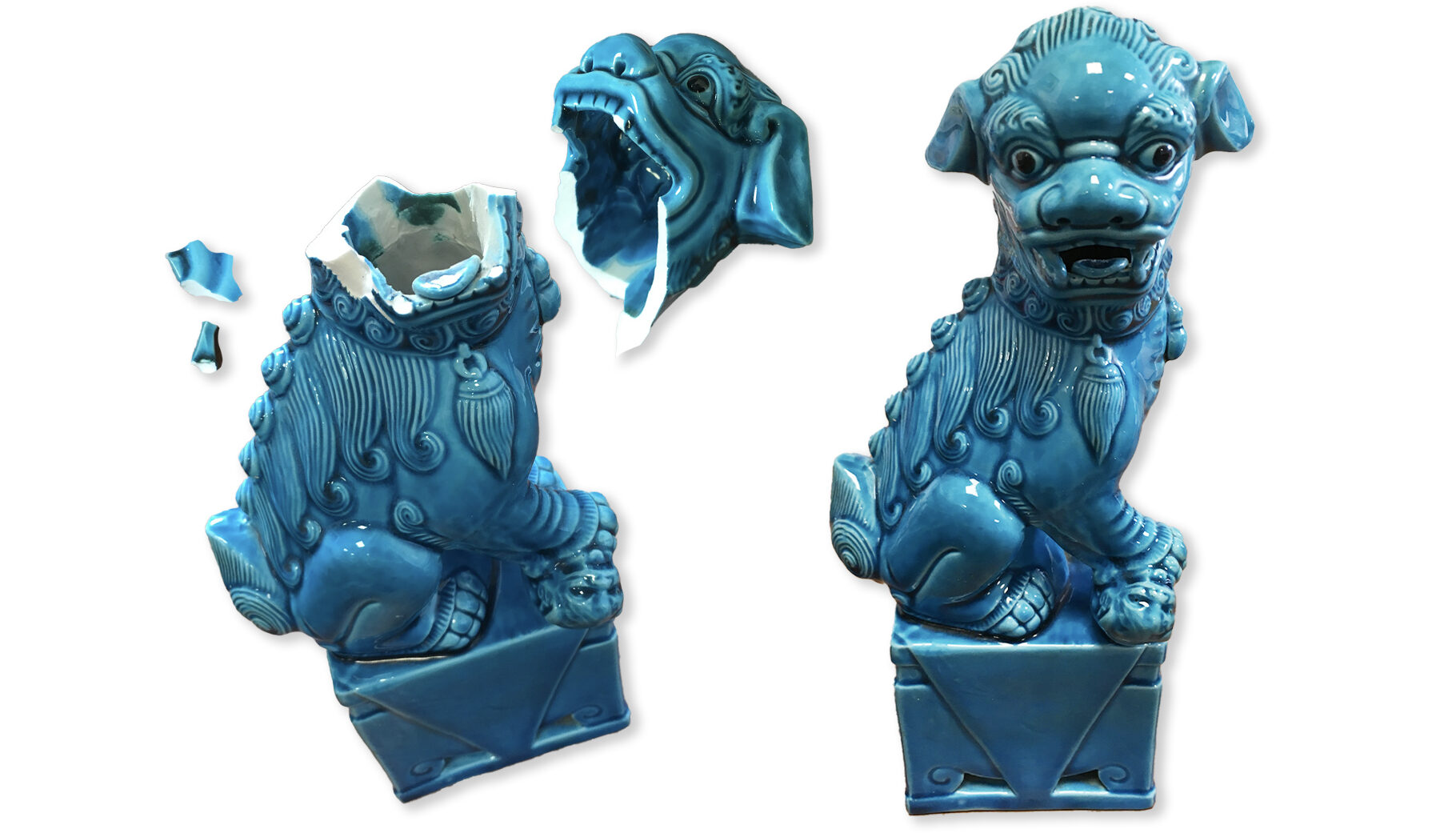
If a porcelain piece is stained or embedded with dust and grime, our conservator can use a customised solution that is the correct strength for the surface of the piece. Using small swabs, all areas can be cleaned and the result will be a bright, original surface. This type of work is often conducted following a household disaster, such as a fire, leak or flood, where harmful contaminants may be clinging to the surface. Below is a large vase that was restored in our studio, including the recreation of a broken handle.
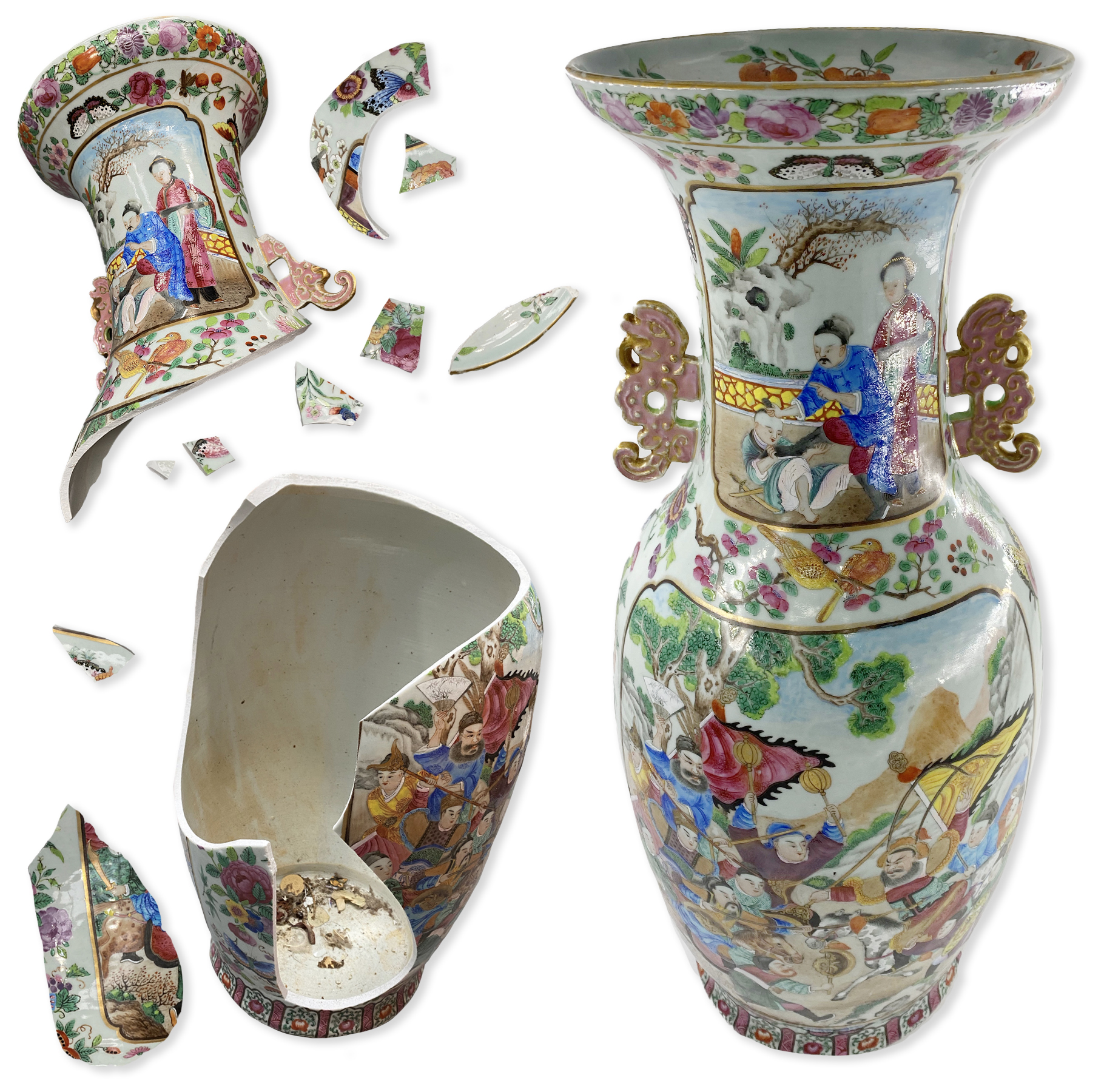
Will restoration affect the value of Chinese porcelain?
Whilst a breakage of any kind may affect the value of antique artworks, restoration conducted to a professional standard will allow the piece to gain a higher value at auction when compared to results for a figurine or tableware item that has missing parts or visual disturbances.
Below is an example of an accidentally damaged bowl that was restored by our conservator following breakage – the porcelain was so delicate that it was semi-transparent, allowing you to see the outer decoration on the inside.
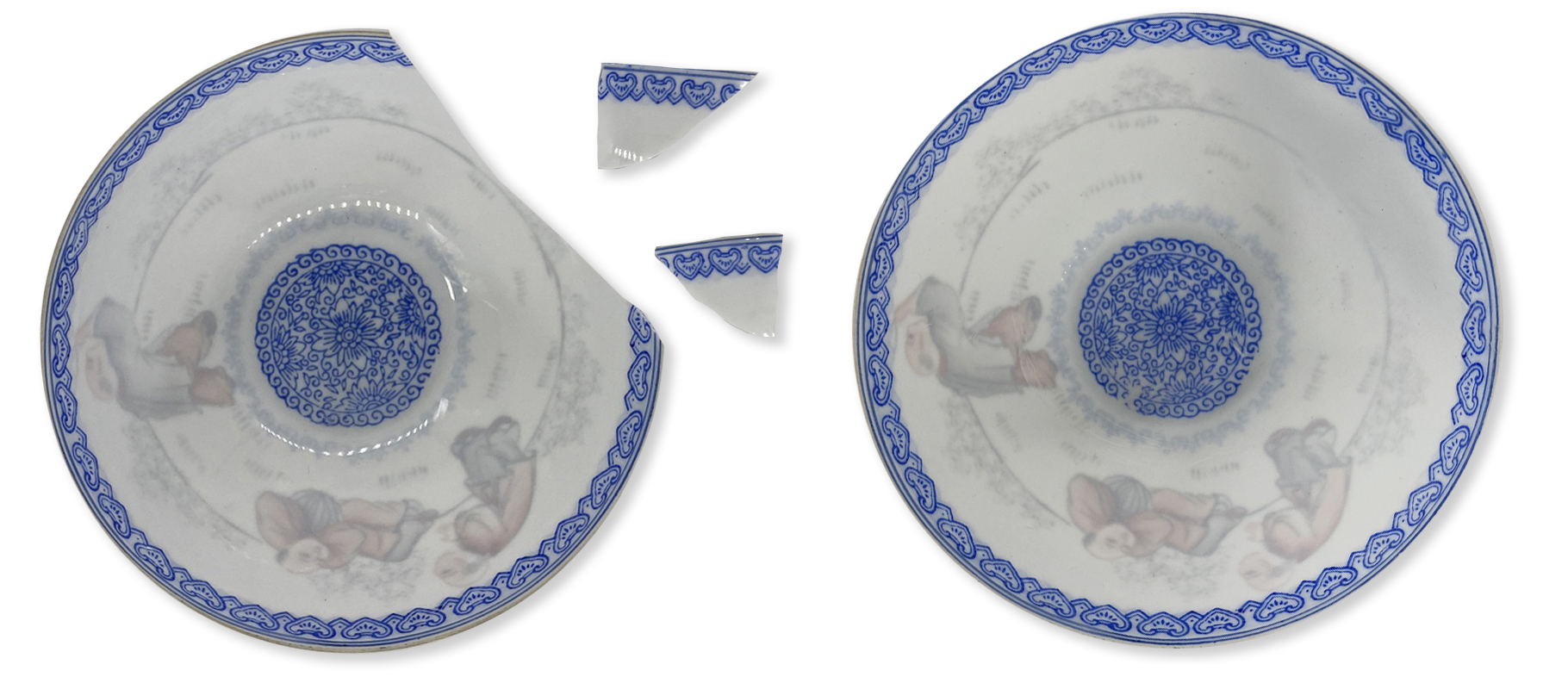
Our ceramics conservator has seen her work reach respectable outcomes at auction following the recreation of missing and broken pieces. Likewise, we often have broken items received post-auction that have been purchased with the intention of restoration. Conservators in our studio all carry Masters degrees or an equivalent qualification and have been trained to museum-level standards.
How can we help?
If you have a piece of Chinese porcelain in need of professional care, please speak to our helpful team for further advice and an obligation free quote. Email us via [email protected] or call 0207 112 7576

 Above: porcelain vases, bottles and figurines from the Qing dynasty
Above: porcelain vases, bottles and figurines from the Qing dynasty 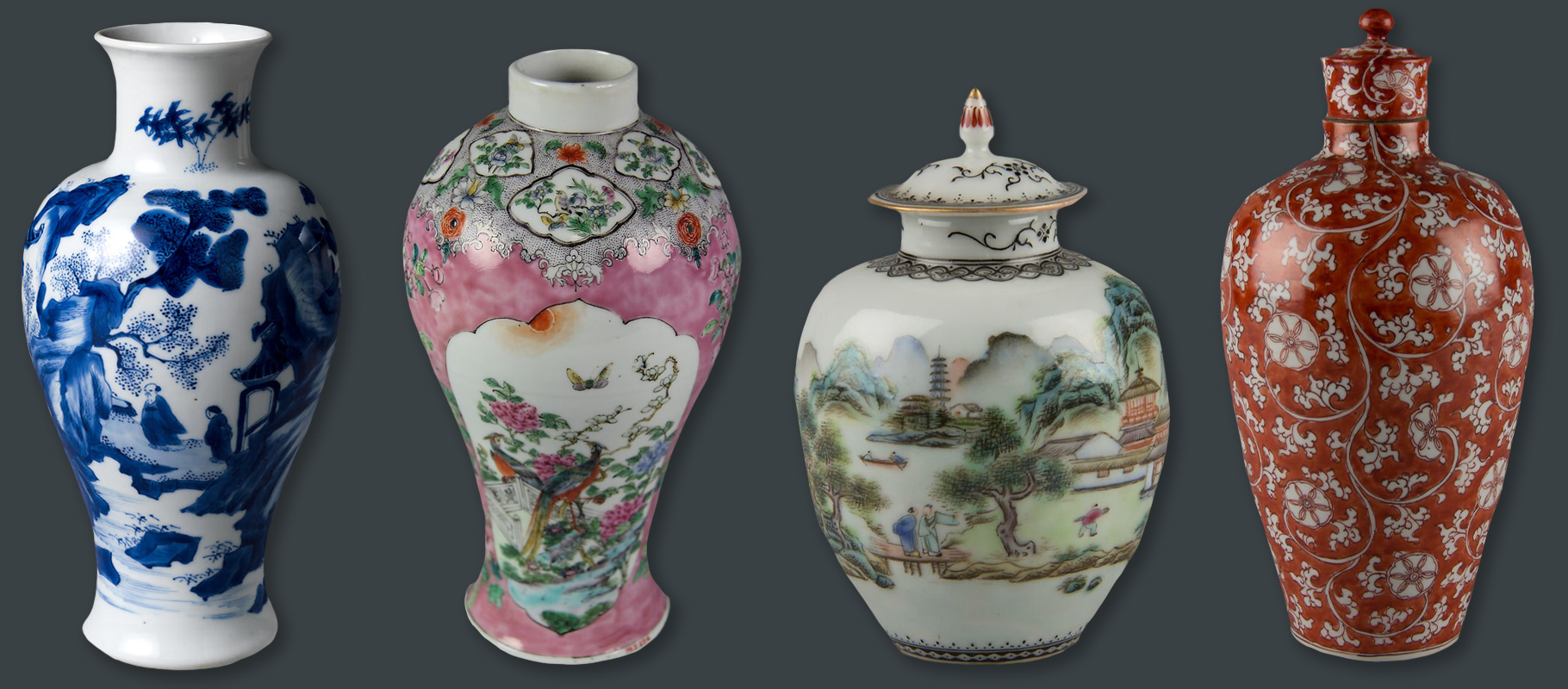 Above: a selection of Chinese vases and jars from the 17th, 18th and 20th centuries
Above: a selection of Chinese vases and jars from the 17th, 18th and 20th centuries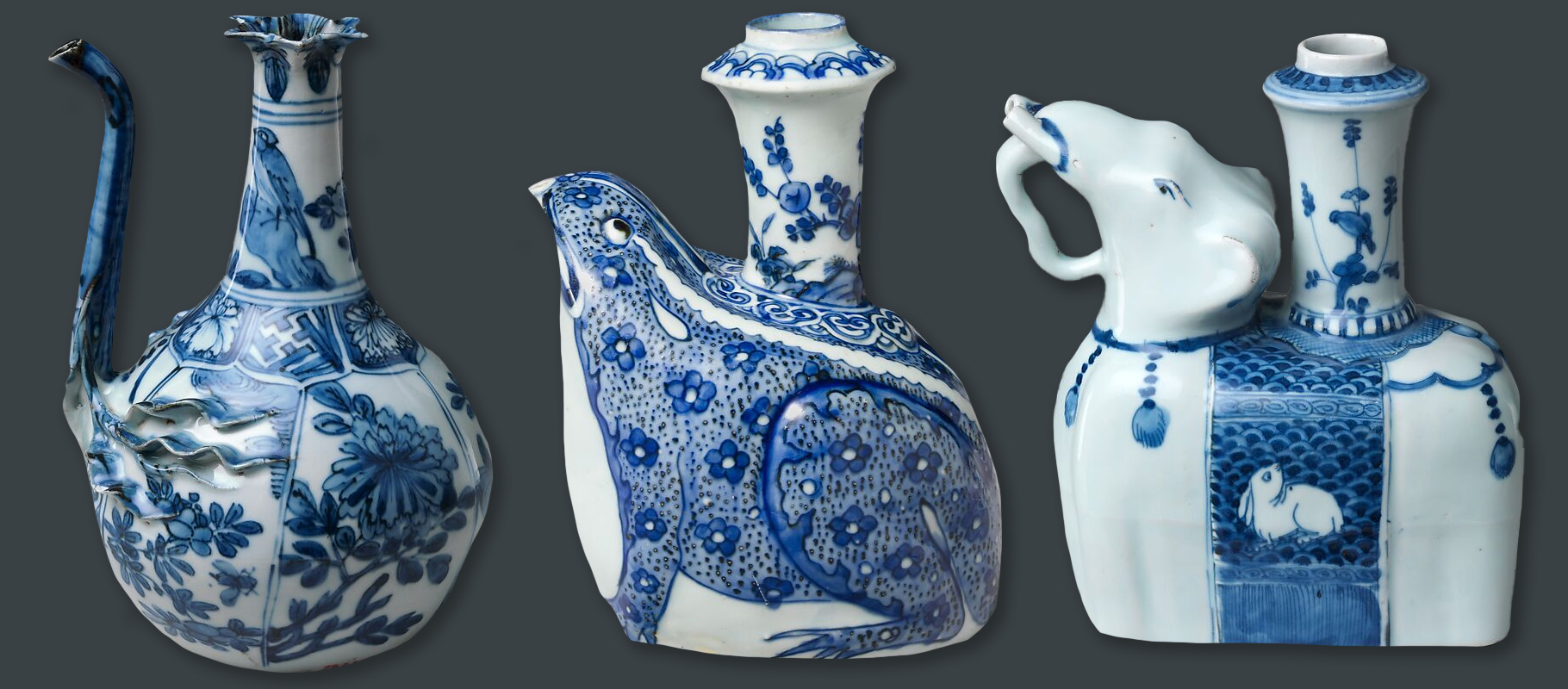 Above: three Ming dynasty drinking vessels, also known as kendi
Above: three Ming dynasty drinking vessels, also known as kendi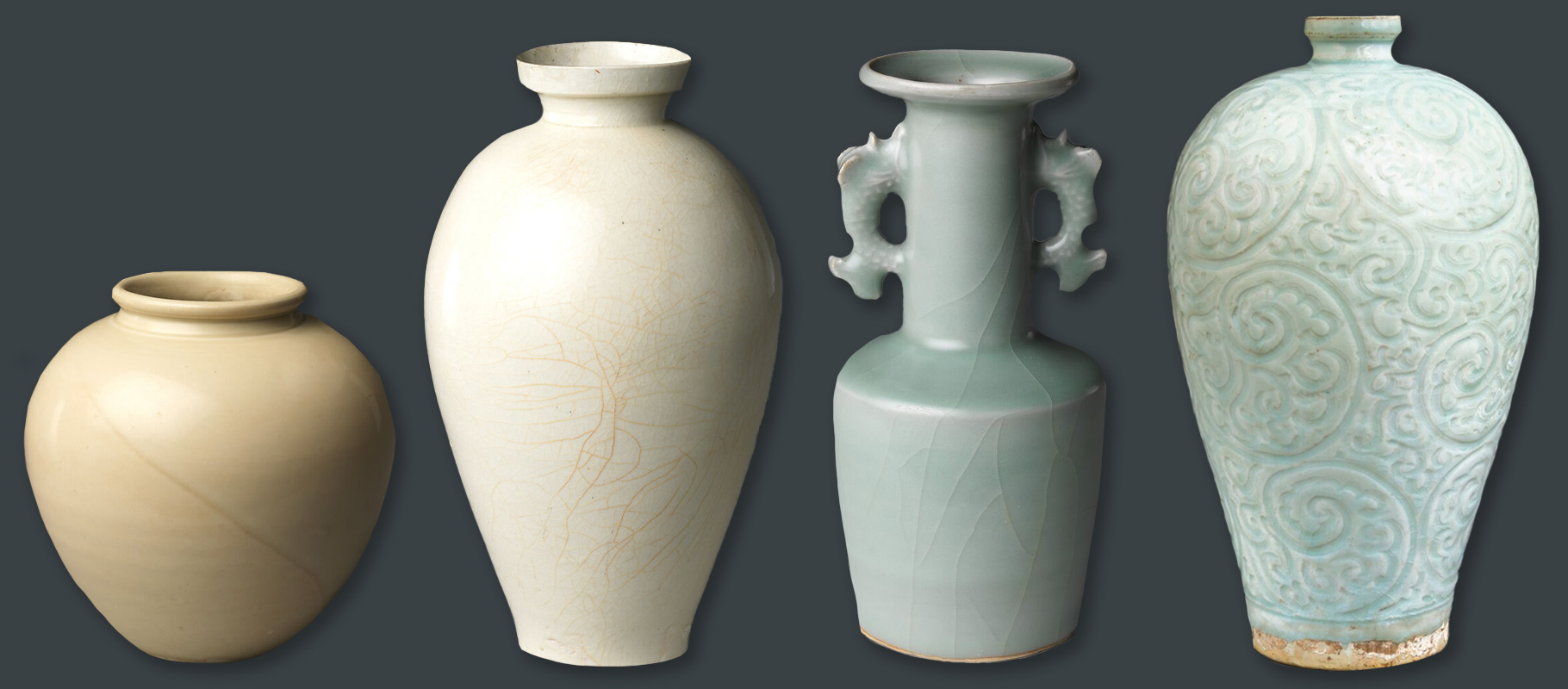 Above: a Tang dynasty jar, a northern Song dynasty vase, a southern Song dynasty vase with dragonfish handles and a Yuan dynasty vase with vegetal scrolls
Above: a Tang dynasty jar, a northern Song dynasty vase, a southern Song dynasty vase with dragonfish handles and a Yuan dynasty vase with vegetal scrolls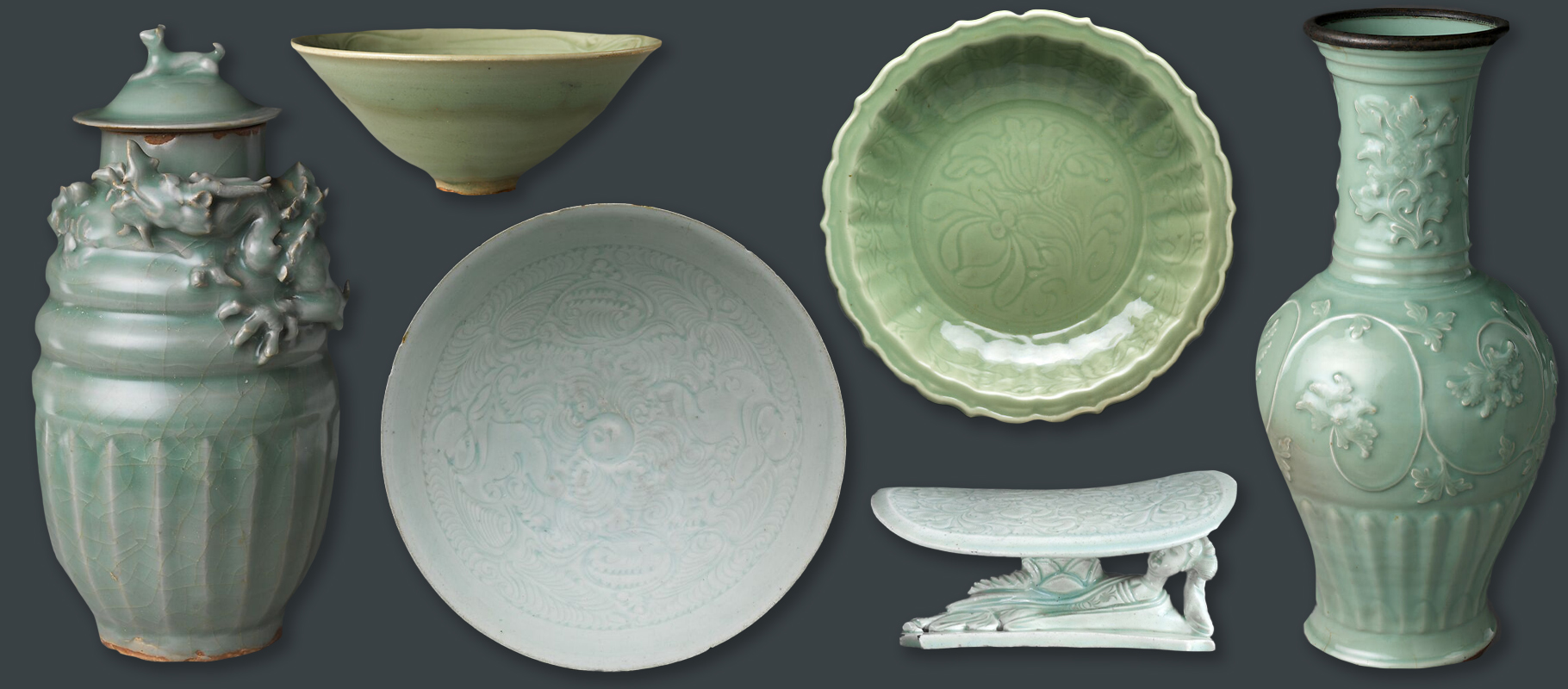 Above: a selection of celadon green ware from the 12th to 15th centuries
Above: a selection of celadon green ware from the 12th to 15th centuries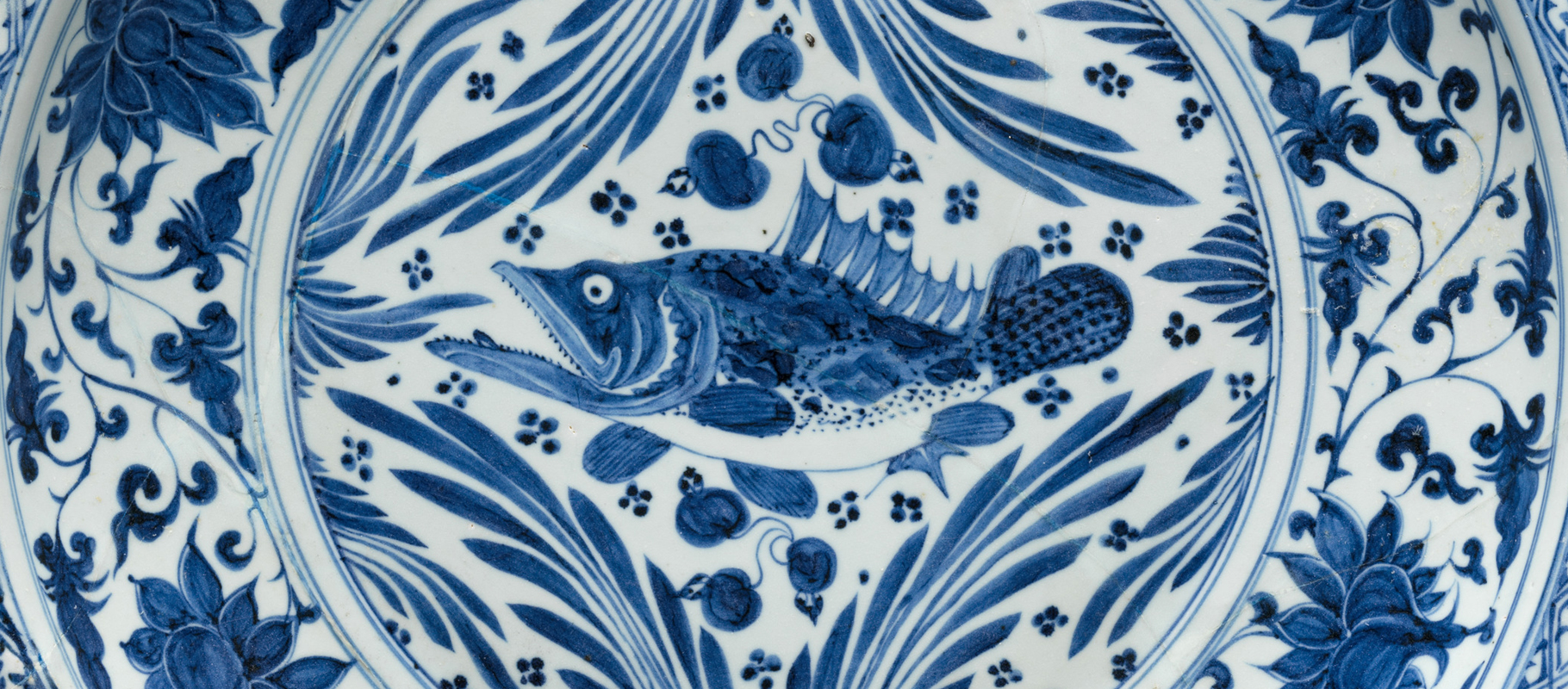 Above: a detail from a Yuan dynasty plate using cobalt blue decoration
Above: a detail from a Yuan dynasty plate using cobalt blue decoration 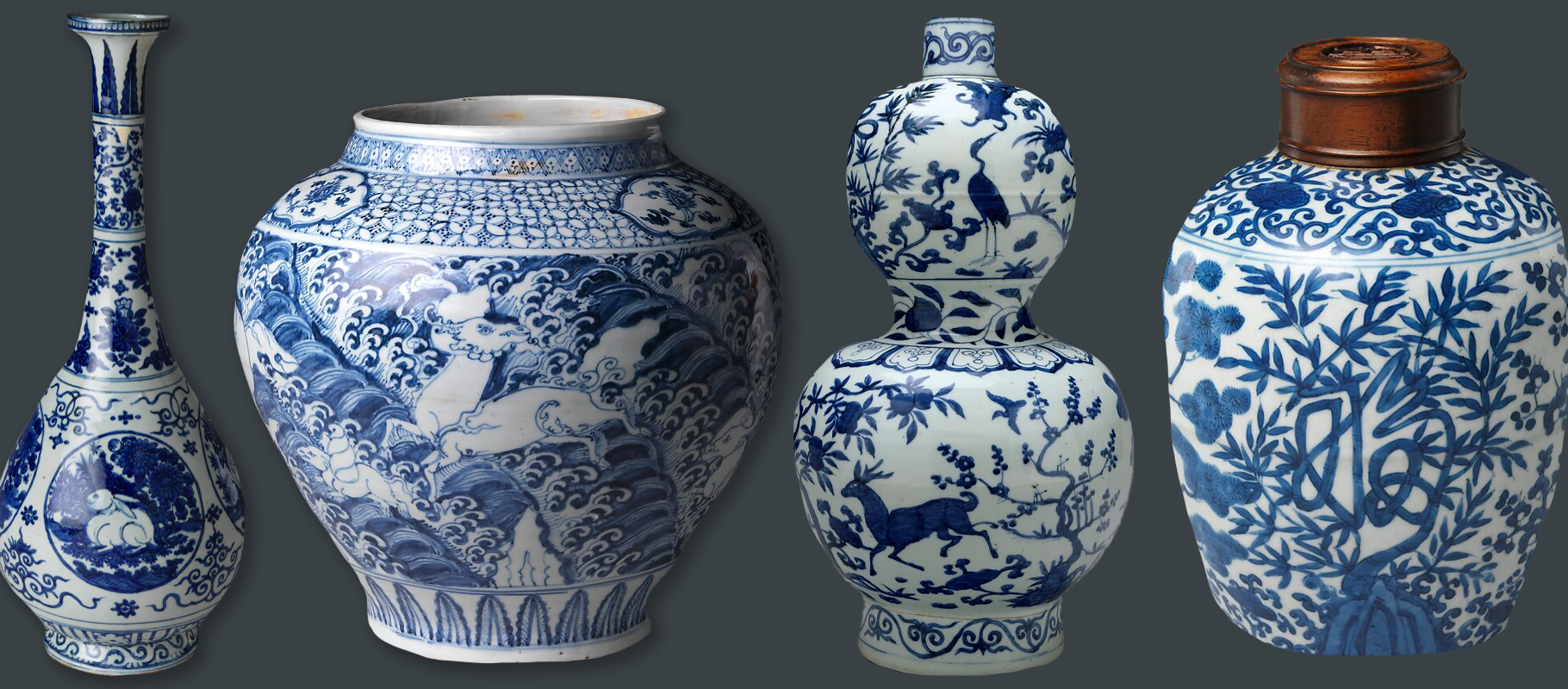 Above: a selection of Ming dynasty porcelain
Above: a selection of Ming dynasty porcelain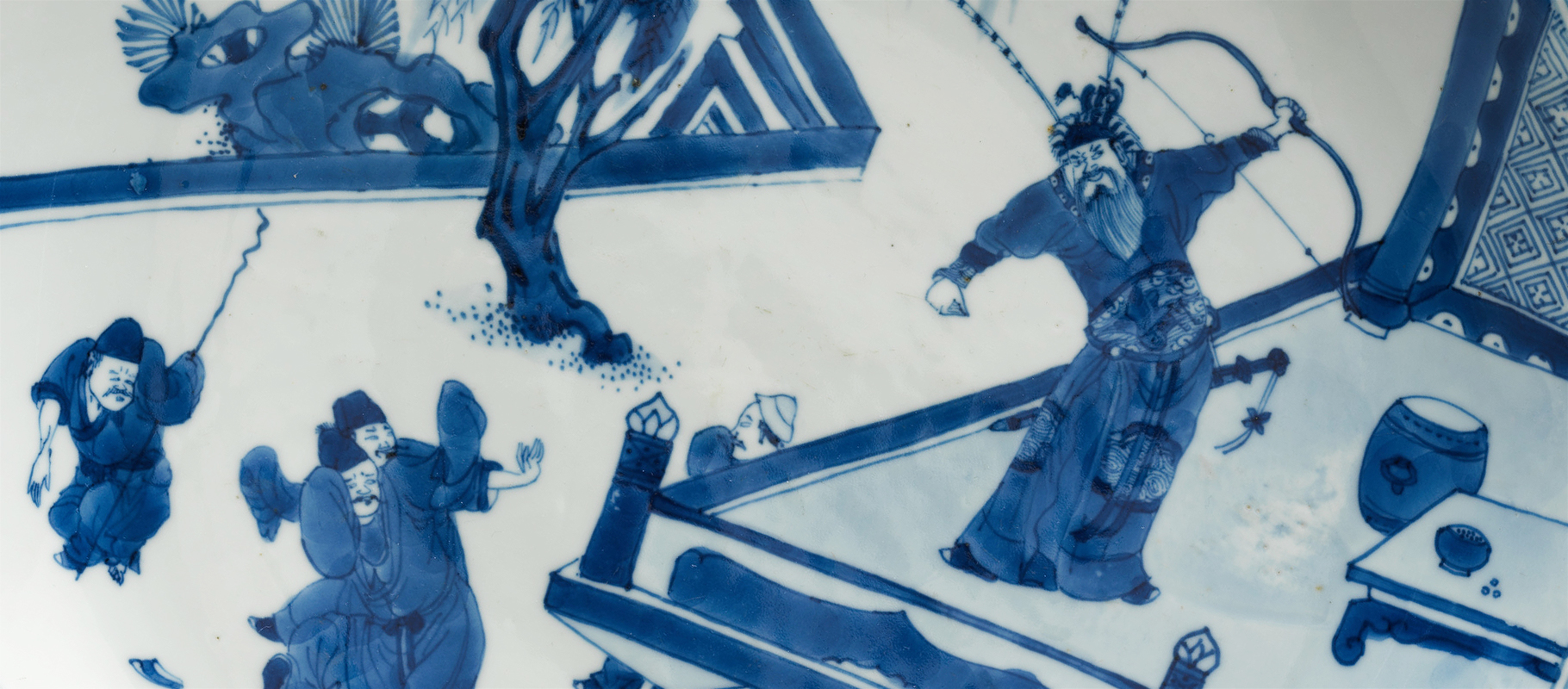 Above: a detail from a Qing dynasty plate from the Kangxi period
Above: a detail from a Qing dynasty plate from the Kangxi period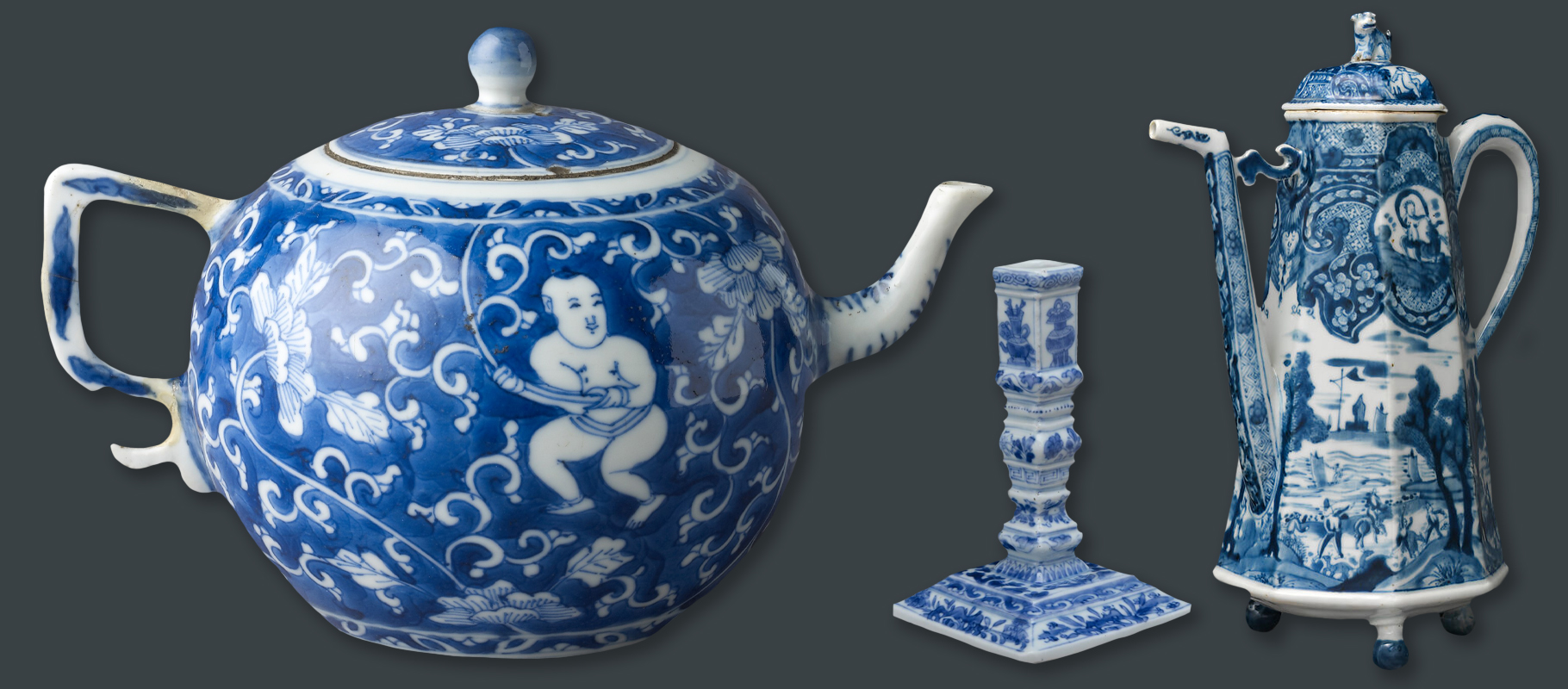 Above: a selection of Chinese porcelain that was produced for the Dutch market, all early 18th century
Above: a selection of Chinese porcelain that was produced for the Dutch market, all early 18th century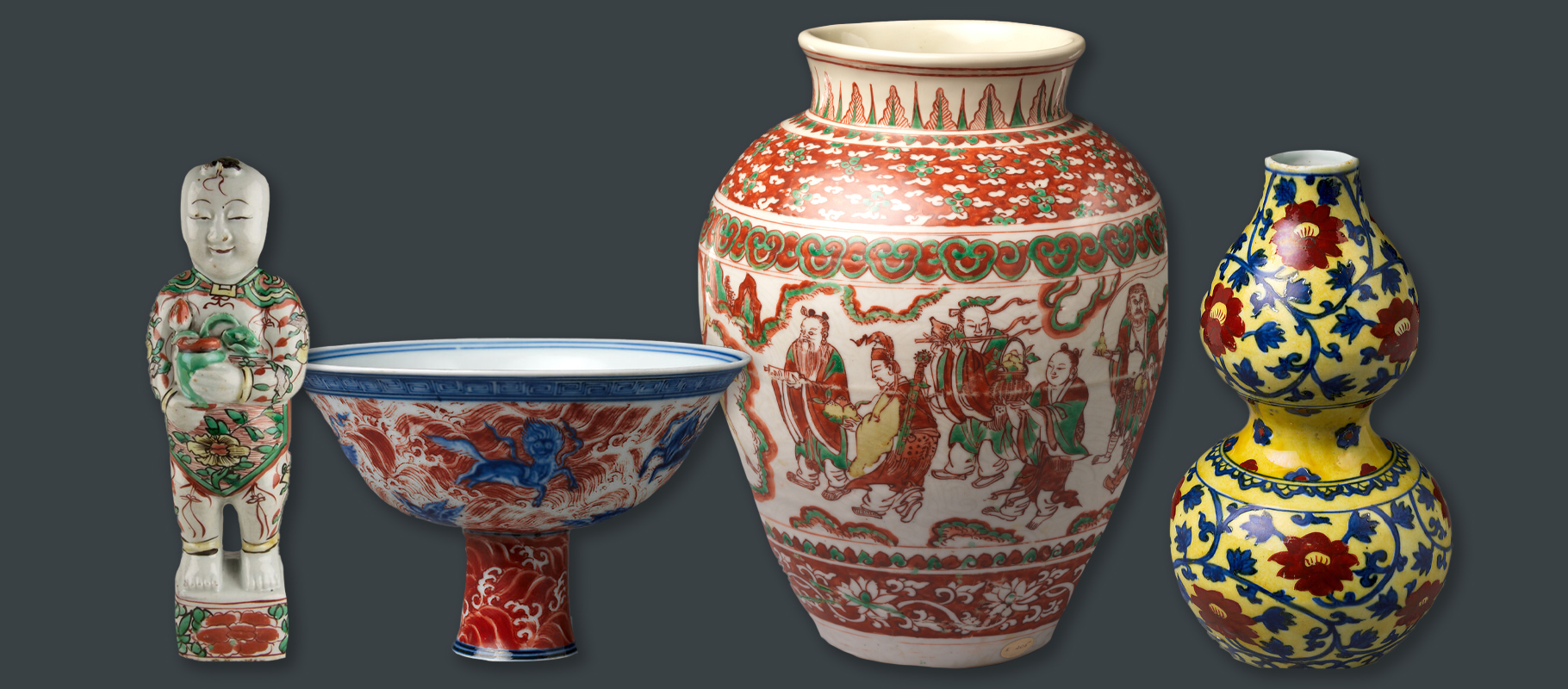 Above: a selection of Ming dynasty porcelain
Above: a selection of Ming dynasty porcelain Above: a detail of an early to mid 18th century Chinese plate that served as inspiration for craftsmen at the Bow porcelain factory
Above: a detail of an early to mid 18th century Chinese plate that served as inspiration for craftsmen at the Bow porcelain factory Above: teapots from the Qing Dynasty, Kangxi period
Above: teapots from the Qing Dynasty, Kangxi period Above: a detail of a Yuan dynasty plate, 14th century
Above: a detail of a Yuan dynasty plate, 14th century




